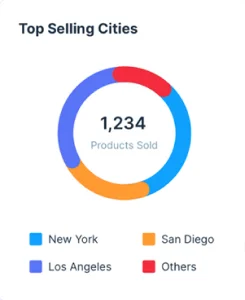The Rise of Interactive Learning Platforms in 2025
Imagine a classroom where every student feels engaged and learns at their own pace. This is the promise of interactive learning platforms, which are reshaping education for teachers, schools, and institutions alike.
As eLearning continues to grow, these platforms offer essential tools that enhance educational experiences. They empower instructors to create customized learning paths that meet the unique needs of each student. This personalization not only fosters a deeper connection to the material but also boosts motivation and retention.
In this post, you’ll discover the latest trends influencing interactive learning platforms in 2025. You’ll learn how they improve teaching efficiency and support student performance. Additionally, explore how tools like PathBuilder can seamlessly integrate with your institution’s systems. With PathBuilder, you can offer students tailored learning experiences that adapt to their readiness and pace, ensuring no one falls behind.

What is an Interactive Learning Platform?
Interactive learning platforms (ILPs) are reshaping the educational landscape by providing engaging, collaborative, and personalized learning experiences. They offer a digital environment where students actively participate, communicate, and collaborate, enhancing their overall comprehension and retention of information. With features that cater to various learning styles, these platforms allow educators to create flexible and engaging lessons tailored to individual student needs.
Key Features of Interactive Learning Platforms
Interactive learning platforms boast several key features that significantly enhance educational efficiency. Here are some of the most effective ones:
-
Gamification: Many ILPs incorporate game-like elements that boost engagement. By turning lessons into challenges or competition, students are more motivated to participate and achieve their learning goals.
-
Real-time Feedback: Immediate feedback on quizzes, assignments, and engagement metrics enables learners to identify areas needing improvement. This instant reinforcement fosters growth and encourages continuous learning.
-
Collaborative Tools: Features like group discussions, forums, and shared projects promote peer interaction. Students can work together, share ideas, and learn from each other, building essential communication and teamwork skills.
-
Customization Options: ILPs often provide tools for instructors to tailor lessons and assessments. This adaptability ensures that different learning styles and paces are accommodated, making education more inclusive.
-
Multimedia Integration: The use of videos, interactive simulations, and dynamic presentations makes learning more immersive. Engaging with various media helps to cater to visual, auditory, and kinesthetic learners.
Types of Interactive Learning Platforms
Understanding the various types of interactive learning platforms can help you choose the right one for your educational setting. Here are some common categories:
-
Learning Management Systems (LMS): These platforms serve as centralized hubs for course management, content delivery, and grading. They are ideal for structured learning, allowing instructors to monitor progress and manage resources.
-
Mobile Learning Apps: Designed for on-the-go access, these apps facilitate learning through smartphones and tablets. This flexibility allows students to engage with their studies anywhere, making learning accessible and convenient.
-
Community-Focused Platforms: These platforms prioritize social learning and community engagement. Features may include forums, peer mentoring, and collaborative projects that enrich the learning experience through interaction with others.
Choosing the right interactive learning platform involves considering your educational needs and how each type can benefit your students. Whichever you select, remember that platforms like PathBuilder can seamlessly integrate with your institution’s systems, offering personalized learning paths that cater to each student’s unique needs, readiness, and pace. Our platform enhances educational workflows, boosting both teaching efficiency and student performance.

Benefits for Educators and Institutions
Interactive learning platforms offer a multitude of advantages for educators and institutions, enhancing both teaching processes and student outcomes. By integrating interactive elements, these platforms create a dynamic environment that fosters active participation and engagement among students.
Enhanced Student Engagement
One of the most significant benefits of using an interactive learning platform is the enhancement of student engagement. Through features like quizzes, polls, and gamification, students remain focused and motivated. When learning resembles a game, with immediate feedback and rewards for progress, students are more likely to participate actively.
Imagine a classroom where students engage in friendly competition to solve problems or complete tasks. This not only makes learning more enjoyable but also increases retention of the material. The interactive elements transform traditional lessons into vibrant experiences that captivate students’ attention.
Flexible Learning Paths
Personalized learning paths are essential in education, and interactive learning platforms excel in this area. They allow educators to create tailored experiences that cater to individual student needs and readiness. Each student learns at their own pace, which is crucial in accommodating diverse learning styles. Whether a student needs extra assistance or is ready to advance quickly, these platforms enable educators to adjust lessons accordingly. This flexibility ensures that no student is left behind and encourages everyone to reach their full potential.
Analytics and Insights
Learning platforms provide educators with valuable analytics and insights into student performance and engagement. By monitoring progress through data-driven dashboards, teachers can identify trends and address issues promptly.
For example, if a student consistently struggles with a specific topic, educators can provide targeted support. These insights enhance the teaching process, allowing for more informed decision-making. With a clear understanding of each student’s strengths and weaknesses, teachers can refine their approaches to improve overall learning outcomes.

Popular Interactive Learning Platforms
In the continuously evolving space of interactive learning, several platforms emerge as leaders, offering a variety of features designed to enhance educational experiences. Each platform is unique, yet they all share a common goal: creating engaging, personalized learning environments that cater to diverse needs. One standout example is PathBuilder, which integrates seamlessly with institutional systems, ensuring that every learner’s journey is tailored to their specific requirements.
PathBuilder
PathBuilder is a robust interactive learning platform that excels in creating personalized learning paths. This tool integrates remarkably well with educational institutions’ existing systems, enabling a smooth transition to interactive learning. With its intuitive drag-and-drop course builder, educators can easily design and adapt courses to fit the needs of their students.
Some key features of PathBuilder include:
-
Personalized Learning Paths: Educators can create tailored experiences, allowing students to progress at their own pace.
-
Engagement Tools: The platform utilizes quizzes and forums to foster collaboration and interaction among learners.
-
Comprehensive Analytics: Users can track student progress over time, providing essential insights for instructional adjustments.
PathBuilder empowers educators to better support their students, making learning more effective and engaging. By offering personalized paths and interactive elements, it ensures that no one is left behind in their educational journey.
Competitors and Alternatives
While PathBuilder stands out, many other interactive learning platforms also make a significant impact in education. Here are some notable alternatives, each bringing its unique strengths to the table:
-
Nearpod: This platform allows educators to create multimedia-rich lessons that include live polls and interactive quizzes, enhancing student engagement.
-
Skilljar: Focused on corporate learning, Skilljar features customizable learning paths and advanced reporting tools tailored to train employees effectively.
-
Khan Academy: Known for its vast library of lessons, Khan Academy promotes self-paced learning with a strong emphasis on foundational subjects like math and science.
-
Edmodo: This platform primarily focuses on collaborative learning, making it an ideal choice for classrooms looking to enhance peer interaction through social learning tools.
-
Sana: Leveraging AI, Sana provides tailored course recommendations and insights into user engagement, enhancing the learning experience through personalization.
These platforms each offer a variety of functionalities, catering to different educational contexts and needs. When choosing an interactive learning platform, consider your specific goals and how each option can help you achieve them. PathBuilder, with its integrated features, remains a top choice for many educators looking to optimize learning experiences for their students.

Conclusion
As you explore the impact of interactive learning platforms, keep in mind that these tools are not just changing the way educators teach; they’re also reshaping how students learn. The evolution of these platforms is marked by increased engagement, customization, and community interaction.
Looking ahead, innovations like artificial intelligence, augmented reality, and microlearning are set to further enhance these platforms. As these technologies evolve, they will create even more engaging and personalized experiences that cater to diverse learning preferences. Imagine immersing yourself in a lesson that feels as real as the world around you—this is not far from reality as we move into the next phase of educational technology.
Seamlessly integrate PathBuilder with your institution’s systems and offer students personalized learning paths designed to match their unique needs, readiness, and pace. Our platform streamlines educational workflows to enhance both teaching efficiency and student performance.


















The PathBuilder team is a dynamic group of dedicated professionals passionate about transforming education through adaptive learning technology. With expertise spanning curriculum design, AI-driven personalization, and platform development, the team works tirelessly to create unique learning pathways tailored to every student’s needs. Their commitment to educational innovation and student success drives PathBuilder’s mission to redefine how people learn and grow in a rapidly changing world.